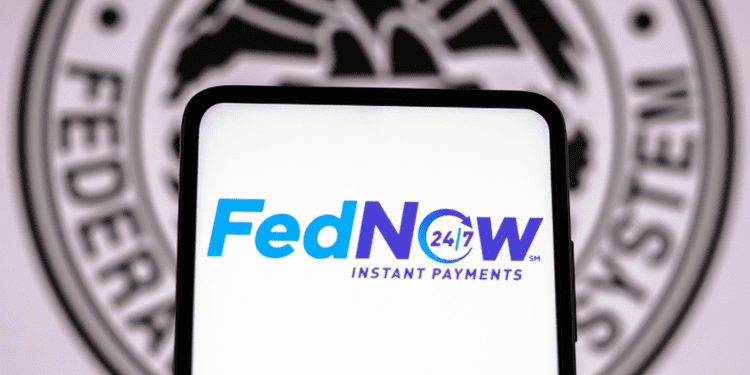The Federal Reserve has officially launched FedNow. It will be rolled out in stages since the effective and safe deployment of the FedNow Service continues to be a top concern. This will enable a swift release of the initial service followed by subsequent features and upgrades. This gradual approach facilitates adaptability and refinements in response to industry demands or technological shifts.
FedNow is a real-time payment and settlement service developed by the US Federal Reserve and was first announced in August 2019. The service aims to provide instant payment processing 24 hours a day, seven days a week, 365 days a year. The primary goal of FedNow is to modernize the U.S. payment infrastructure, offering financial institutions of all sizes access to a safe and efficient instant payment system.
Key features of FedNow include:
- Real-time payment processing: FedNow enables financial institutions to process and settle transactions in real-time, which can improve the speed, efficiency, and accessibility of payments in the United States.
- Universal access: FedNow aims to offer equal access to financial institutions of all sizes, ensuring that even smaller banks and credit unions can participate in real-time payments.
- Safety and security: As a service provided by the Federal Reserve, FedNow is designed to be a safe and secure payment option. The system incorporates measures to prevent fraud, ensure compliance with regulatory requirements, and manage risks associated with instant payments.
- Interoperability: FedNow is designed to be compatible with existing and emerging instant payment systems, making it easier for financial institutions to integrate the service into their existing infrastructure.
- Support for additional services: FedNow is designed to be adaptable and can support the development of new financial services and use cases that can leverage real-time payments.
The Process:
First, the sender, an individual or a business, initiates a payment by sending a payment message to their bank via an end-user interface separate from the FedNow Service. The sender’s bank is accountable for evaluating the payment based on its internal processes and requirements. Next, the sender’s bank submits the payment message to the FedNow Service.
The FedNow Service then validates the payment message by ensuring it meets message format specifications. After validation, the FedNow Service forwards the payment message to the receiver’s bank, asking for confirmation that the institution plans to accept the payment message. The receiver’s bank can confirm or deny if they maintain the specified account.
Once the receiver’s bank sends a positive response, indicating their intention to accept the payment message, The FedNow Service debits and credits on the specified primary accounts of both the sender’s and receiver’s banks (or their associated correspondent banks) accordingly. This process helps reduce the number of misdirected payments and related exception cases in high-volume systems.
Subsequently, the FedNow Service sends a payment message to the receiver’s bank along with the advice of credit while simultaneously sending an acknowledgment to the sender’s bank, notifying them that the settlement is complete. Finally, the receiver’s bank credits the receiver’s account. The Federal Reserve Banks expect the receiver’s bank to give almost instant access to the receiver’s funds after this step. Both the crediting of the receiver’s account and the debiting of the sender’s account occur outside the FedNow Service and are managed by their respective financial institutions.

Is this necessary?
Looking at the diagram, one wonders how adding an extra step can make a process quicker. It also makes you question the current system since everything is already digital. It turns out that bank transfers can take a while for various reasons, such as the involvement of multiple intermediaries, differences in operating hours between banks, and different transaction processing times. Additionally, international transfers may involve currency conversions and compliance checks, further delaying the process. The traditional banking infrastructure has yet to be optimized for real-time processing, and as a result, transfers can take anywhere from a few hours to several days to complete.
FedNow will be different from the traditional system because it is designed as a real-time payment system, which allows for instant fund transfers between financial institutions on a 24/7 basis. Traditional banking systems often rely on batch processing, wherein transactions are grouped and processed at specific times. This leads to delays in fund transfers, as they depend on bank operating hours and processing times. FedNow, on the other hand, uses modern technology and streamlined processes to enable faster and more efficient transfers.
Why can’t our current infrastructure change?
The traditional banking system cannot simply change overnight due to several reasons. First, the existing infrastructure and legacy systems have been in place for decades, and replacing or upgrading them requires significant time, effort, and investment. Second, banks need to adhere to strict regulatory requirements, which can make it challenging to implement new technologies or processes quickly. Finally, the banking industry involves numerous stakeholders, including regulators, banks, and consumers, all needing to collaborate and agree on changes. The introduction of real-time payment systems like FedNow represents a concerted effort to modernize and transform the banking landscape while addressing the limitations and inefficiencies of the traditional system.
To conclude, FedNow seems poised to simplify the experience for conventional banking users. Currently, it does not pose a direct challenge to blockchain or stablecoin technology, as its primary focus is on handling fiat bank funds exclusively. However, as the system is being deployed in stages, there is potential for integrating a Central Bank Digital Currency (CBDC) in the future, which would not require much additional effort. It will be interesting to watch this develop.














